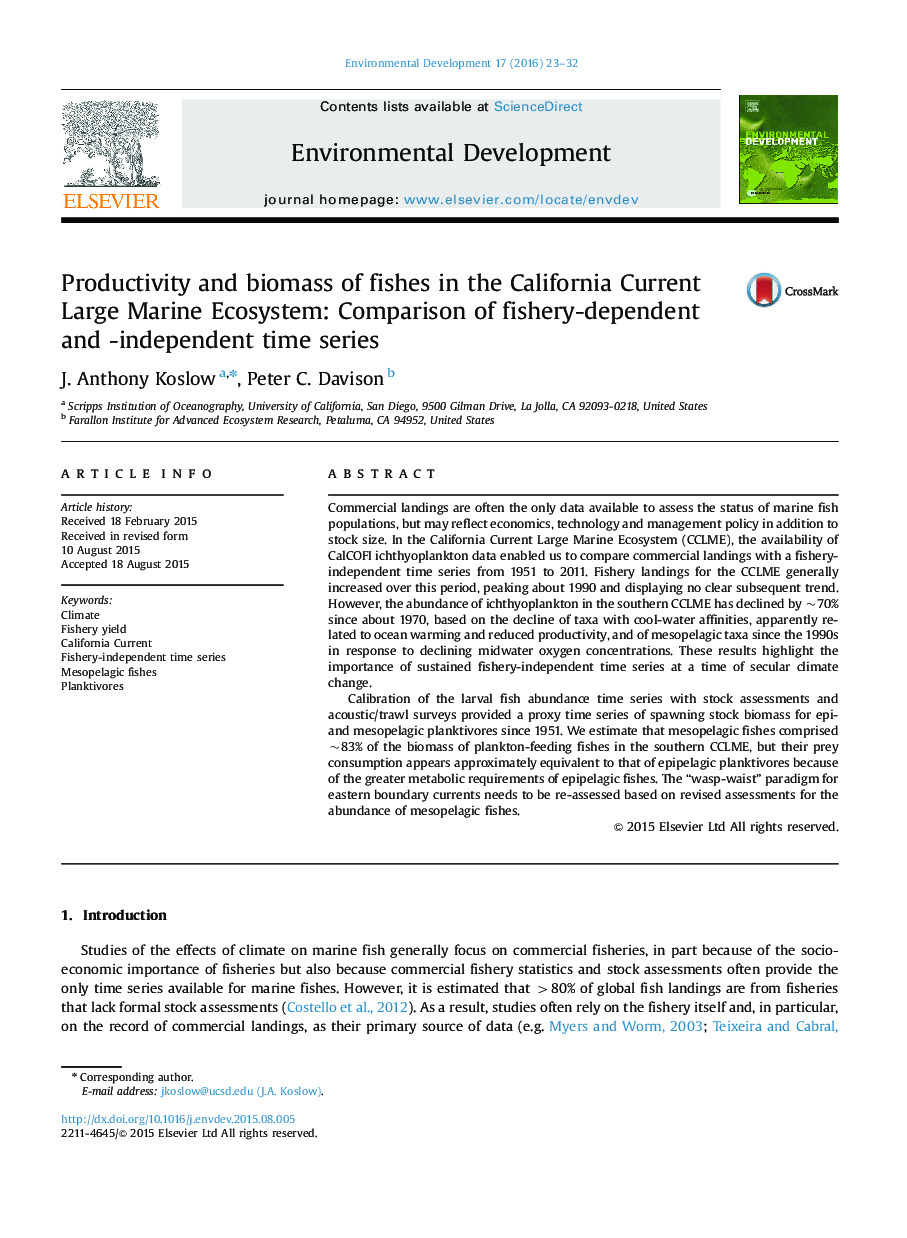| کد مقاله | کد نشریه | سال انتشار | مقاله انگلیسی | نسخه تمام متن |
|---|---|---|---|---|
| 4391372 | 1305318 | 2016 | 10 صفحه PDF | دانلود رایگان |
• Fishery landings in the CCLME increased until ~1990 with no subsequent trend.
• Ichthyoplankton abundance in the CCLME has declined ~70% since 1970.
• Landings and larval abundance are generally uncorrelated in the CCLME.
• Fishery-independent time series are essential to assess fish population status.
• Mesopelagic fishes consume ~ half of zooplankton production in the CCLME.
Commercial landings are often the only data available to assess the status of marine fish populations, but may reflect economics, technology and management policy in addition to stock size. In the California Current Large Marine Ecosystem (CCLME), the availability of CalCOFI ichthyoplankton data enabled us to compare commercial landings with a fishery-independent time series from 1951 to 2011. Fishery landings for the CCLME generally increased over this period, peaking about 1990 and displaying no clear subsequent trend. However, the abundance of ichthyoplankton in the southern CCLME has declined by ~70% since about 1970, based on the decline of taxa with cool-water affinities, apparently related to ocean warming and reduced productivity, and of mesopelagic taxa since the 1990s in response to declining midwater oxygen concentrations. These results highlight the importance of sustained fishery-independent time series at a time of secular climate change.Calibration of the larval fish abundance time series with stock assessments and acoustic/trawl surveys provided a proxy time series of spawning stock biomass for epi- and mesopelagic planktivores since 1951. We estimate that mesopelagic fishes comprised ~83% of the biomass of plankton-feeding fishes in the southern CCLME, but their prey consumption appears approximately equivalent to that of epipelagic planktivores because of the greater metabolic requirements of epipelagic fishes. The “wasp-waist” paradigm for eastern boundary currents needs to be re-assessed based on revised assessments for the abundance of mesopelagic fishes.
Journal: Environmental Development - Volume 17, Supplement 1, January 2016, Pages 23–32
